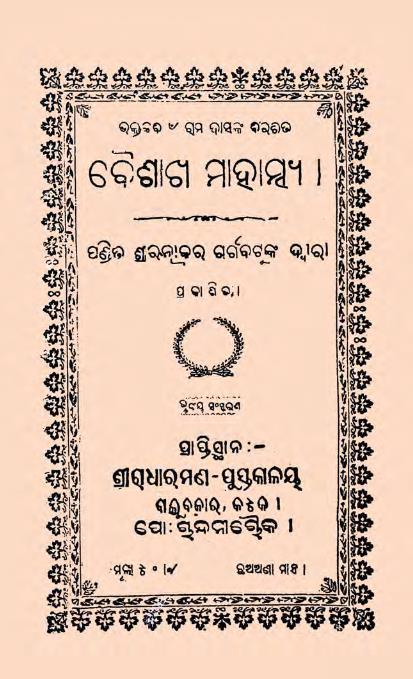Published in 1933, Epic Baisakh Mahatmya by Ram Das stands as a significant literary work that intertwines spirituality, mythology, and cultural heritage. As a sub-epic, the text delves deeply into the religious significance of the month of Baisakh in the Hindu calendar, particularly highlighting its importance in the lives of devotees and its celebrations in the community.
The month of Baisakh, which generally falls between mid-April and mid-May, marks the beginning of the New Year in many parts of India. It is celebrated with great fervor, characterized by various rituals, fairs, and festivals. The importance of Baisakh can be traced back to ancient texts, where it is often associated with significant cosmic events.
In Epic Baisakh Mahatmya, Ram Das eloquently captures the essence of this month, presenting it not merely as a time marker but as a period imbued with divine blessings and opportunities for spiritual renewal. Through vivid storytelling, he paints a landscape where nature abounds and rituals flourish, showcasing the intricate relationship between the environment, human existence, and spiritual practice.
The text is rich with themes that resonate with the reader’s quest for spirituality and self-discovery. Devotion, transformation, and celebration of life are central to the narratives woven throughout the sub-epic. Ram Das introduces a plethora of characters—both divine and earthly—who embark on journeys of faith and enlightenment.
The book is structured around various tales that illustrate rites and rituals pertinent to the month of Baisakh. It highlights the significance of practices such as the sacred bath, offering of prayers, and the gathering of communities for festivities. Each narrative serves as both a teaching and an invitation for readers to engage with their spirituality.
Moreover, the author’s poetic language elevates the text, creating a lyrical quality that enhances the thematic depth. Rams Das’s use of metaphors and allegories draws readers into a vivid world where the divine intertwines with the mundane, urging them to find the sacred in everyday life.
Epic Baisakh Mahatmya is also significant for its role in translating oral traditions into written form. During the early 20th century, many cultural practices and tales risked being lost as society rapidly modernized. Ram Das’s work serves as a bridge, preserving the essence of these traditions for future generations while also reinterpreting them for contemporary readers.
The book’s release during a time when India was grappling with its identity amidst colonial influences provides an added layer of importance. It serves as a reminder of the richness of Indian culture and the timeless relevance of its spiritual traditions.
Books Info
| Books name | Baisakh Mahatmya / ବୈଶାଖ ମାହାତ୍ମ୍ୟ |
| Author | Ram Das |
| No Of pages | 87 |
| Publisher | Sri Radharamana Pustakalaya |
| Publication | 1933, 3e. |
| Printed At | NA |
| Distributor | NA |

